Births, Deaths, Marriages
part 1
image source
Clues found on them can help take you back another generation.
They will vary from country to country, and from time to time; and while I cannot list every example here, I've tried to give you a little idea of what to expect.
BUT be aware that the information on a certificate (sometimes called Vital Records) is only as good as both the information giver and information recorder. Mistakes happen. Words are misspelt or misheard. Family lore isn't fact. Writing is misread and subsequently transcribed wrongly.
So triangulation of information is important too - finding other ways to support facts so that 'majority rules'.
Buying copies of certificates is quite costly, which is why I thought it would be a good idea to show you just how useful they can be (or not, sometimes frustratingly lacking in the information you need!).
Birth Certificates
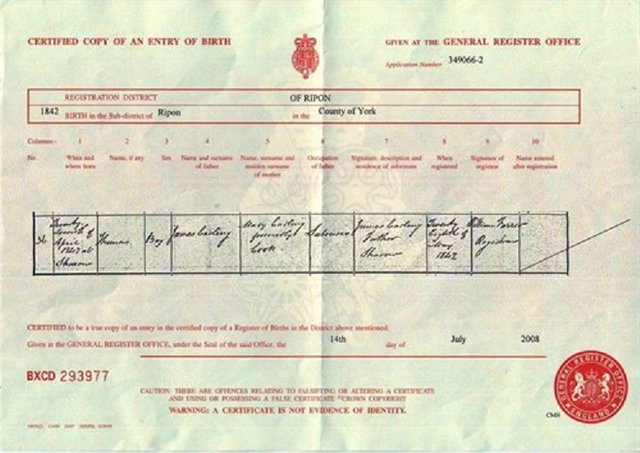
(source unknown)
It isn't very clear, but it lists date, name, sex, father, mother (including maiden name), father's occupation and other bits.
The mother's maiden name is one of the most sought-after pieces of information on a birth certificate. From it you can search for a marriage between her and the child's father, and discover other children they may have had.
This next one is taken from a registration book in Canada. It shows twins Lemuel Richard TELFORD and Martha Ellen TELFORD (4 Sep 1888), and then Flossie Pearl WILSON. (14 Sep 1888)
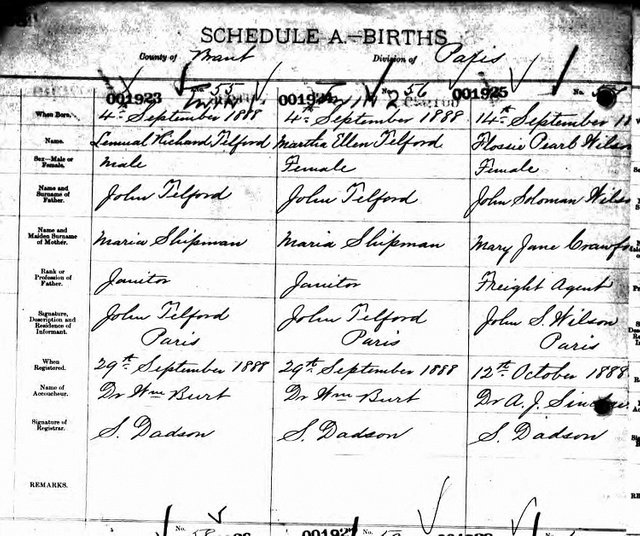
(source unknown)
Information is listed via column. We can still get a good amount of useful information from this type of record, much like the first example above.
In this next example, from the USA, for Joseph Richard WATERS (22 Dec 1919) we can see some extra information included on the certificate, which can come in handy.
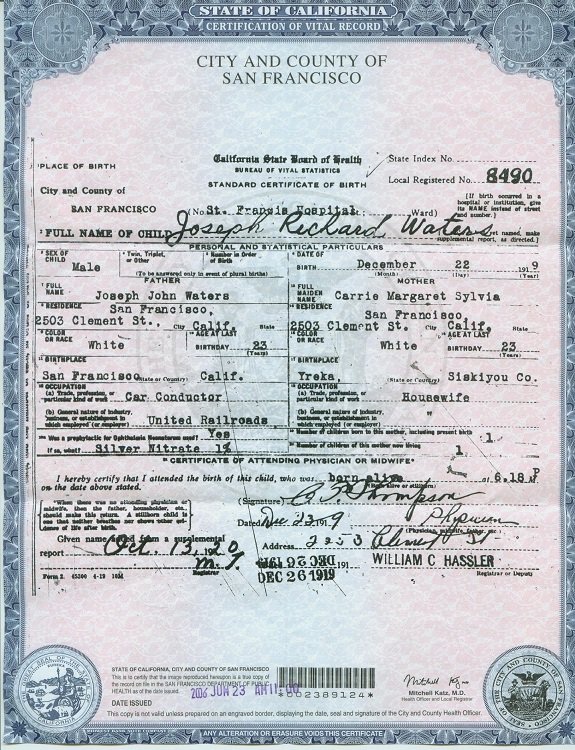
image source
Note that it shows colour/race of each parent; and whether there have been any previous children born to the mother.
Also, although I cannot quite make out the wording, it appears to be listed whether there were any drugs involved during the birth (listed: silver nitrate 1%).
Death Certificates
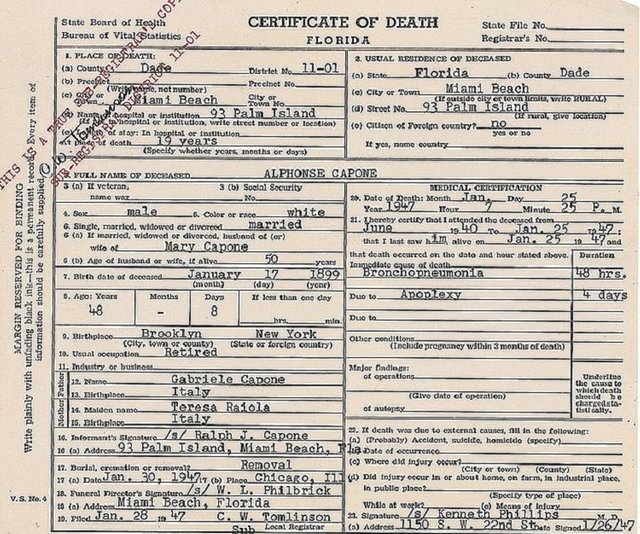
image source
As you'll notice, it is a USA vital record. It has a lot of good information for us to work with (as researchers), such as where & when & cause of death, parents names, next of kin, date & place of birth, usual residence, and other bits.
(I had no idea his name was actually Alphonse!)
Here is another example, this time issued in the UK, for Thomas ATKINSON. (17 Mar 1922)
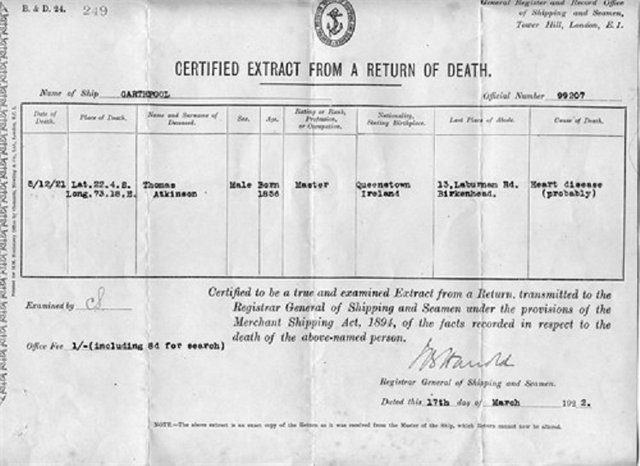
(source unknown)
Apologies for the quality not being so great.
This one is especially interesting because he died at sea, so the information given is a little different to what is normally seen.
There was a gap of several months between when he died and when the certificate was issued - perhaps the ship couldn't get back to base for a while.
His place of death is given as coordinates (lat & long), and he was aboard a ship.
They may have issued a more formal death certificate once they'd been given more information.
Another UK example, for Evelyn Mary MacINTOSH. (20 Dec 1918)
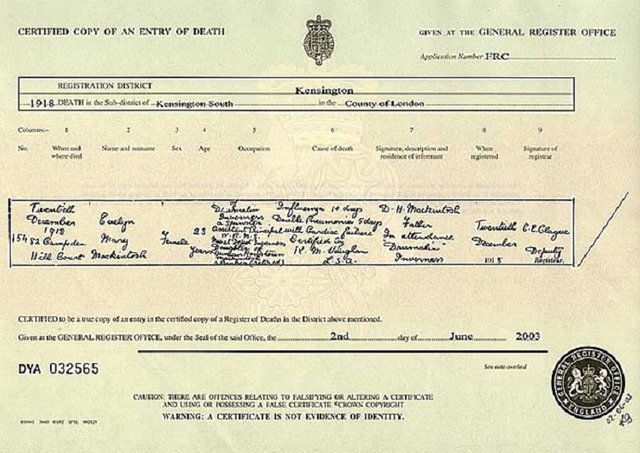
image source
While the handwriting is rather difficult to read in places, we can see that it gives the name of her father, as informant. We can also see that she never married as she is listed with her maiden name.
I could speculate that as it is 1918 and her cause of death was influenza, that she was a victim of the Spanish Flu epidemic that swept through the country and killed thousands of people.
Marriage Certificates

(source unknown)
We can see whether either party had been previously married (in this case, not); current profession & residence; and fathers' names & occupations (if either had been deceased by this time, it would have been noted as such). It has each party's signature (if illiterate, their marks), which is pretty cool to see.
Also take note of the witness names. These are often close family members which is another good piece of information.
Another example, more official-looking, is for Thomas Henry HONEY and Mary Jane CROCKER. (25 May 1892)
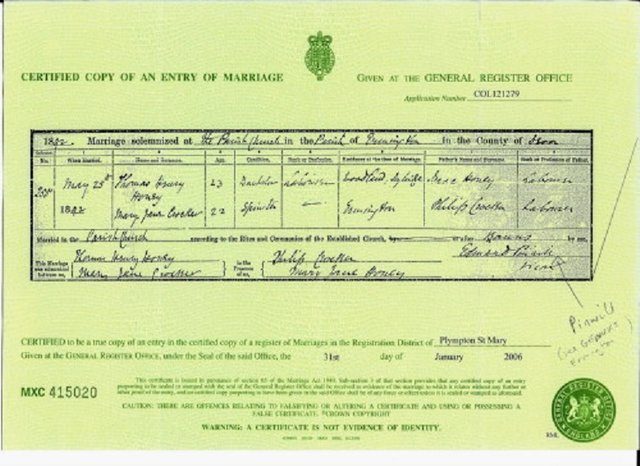
(source unknown)
It shows the same type of information as the previous example, but you can see that it is an officially-issued document.
This next example was issued in Canada, for William STARR and Clara Mary KEMPTHORNE (29 Jun 1928)
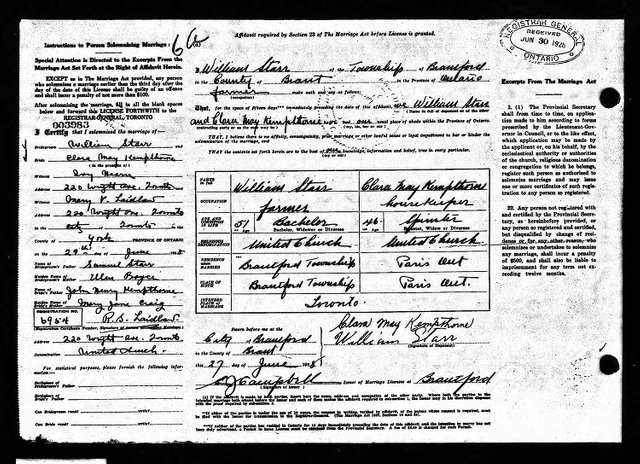
(source unknown)
You can see how different it looks to the UK examples, but still shows all the important facts.
In stark contrast, this one issued in the USA for Lyman Truman BARRINGER and America Jane EATON (3 Jun 1874) is very information-poor.
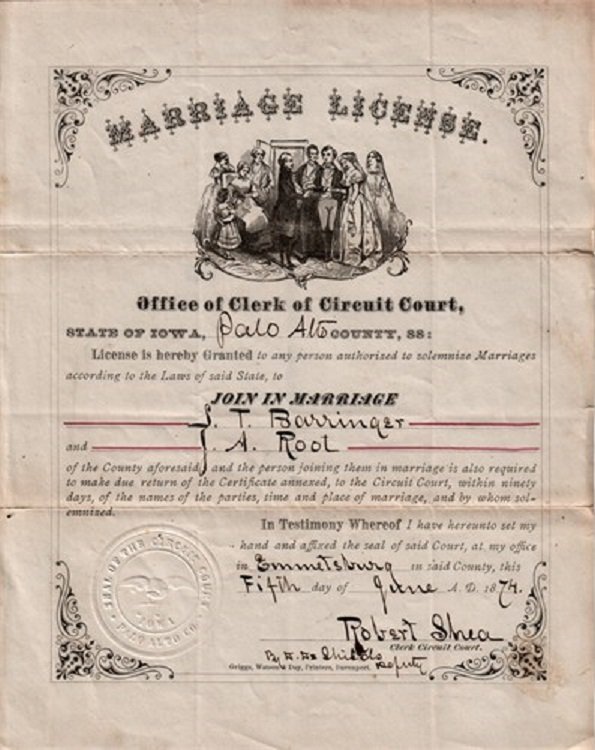
(source unknown)
What it doesn't show is the full name of either person, nor that 'J A ROOT' was in fact America Jane EATON. She had been previously married. Perhaps she put the J. first as she was known as Jane, not by her first name.
In England, for example, from the third quarter of 1837 it became law to register the event with the government, but before that we have to rely on parish (church) records, and whether the people could afford to do so.
In the USA the beginning of official records varies hugely from state to state so doing a bit of research to check out just when is a must, otherwise you could have a fruitless search for something that doesn't exist.
I'm not sure when other countries brought in their own official BDM record-keeping systems, so again - check. In New Zealand (and Australia, I think) we are lucky in that we organised ourselves pretty early on.
There are other types of records which can yield similar information as the BDMs, which I will talk about in my next lesson.
I hope you've found this stuff useful. :)
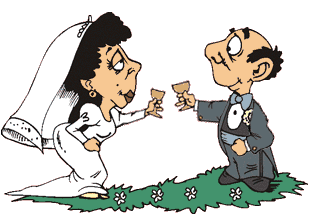
image source
If you'd like to catch up on the earlier lessons, here are the links to those posts:
Lesson 1
Lesson 2
I'd love to hear about your own family tree research. :)
If you are interested in your own family history and want some help, I work for Steem & SBD. Check out my biz post here.
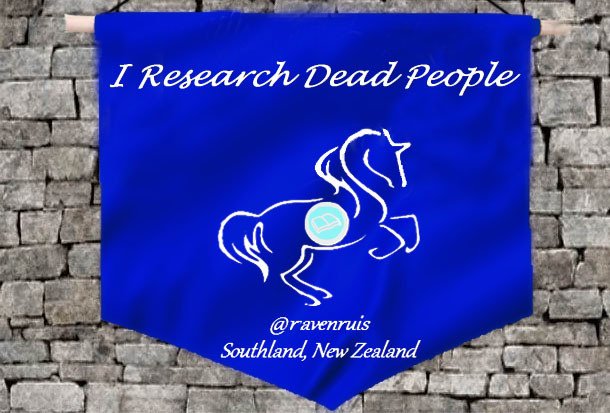


(extra tags: #blog #teamnz #nobidbot #minnowsupport #familyhistory )
Wow very informative and interesting post
Downvoting a post can decrease pending rewards and make it less visible. Common reasons:
Submit